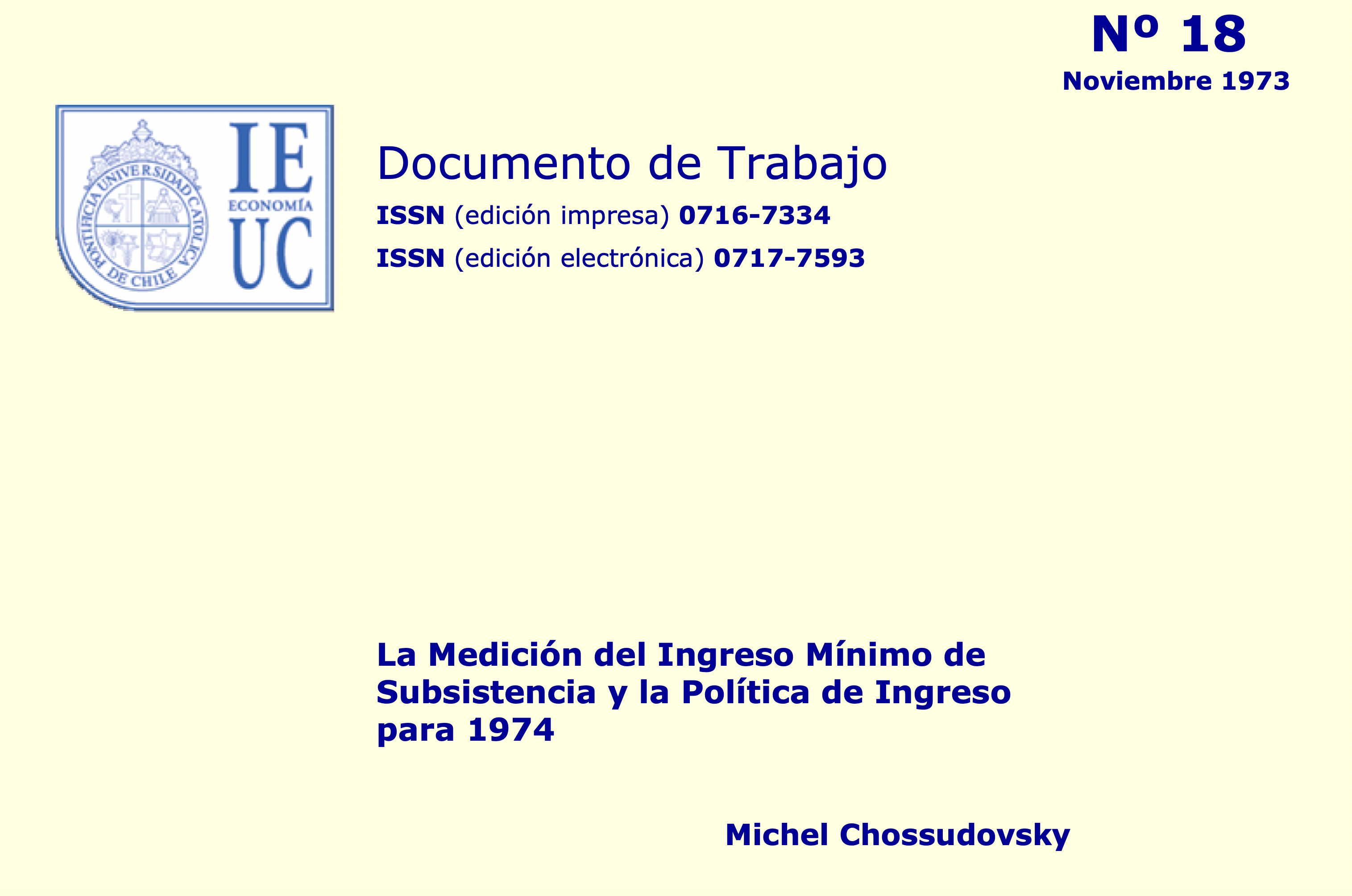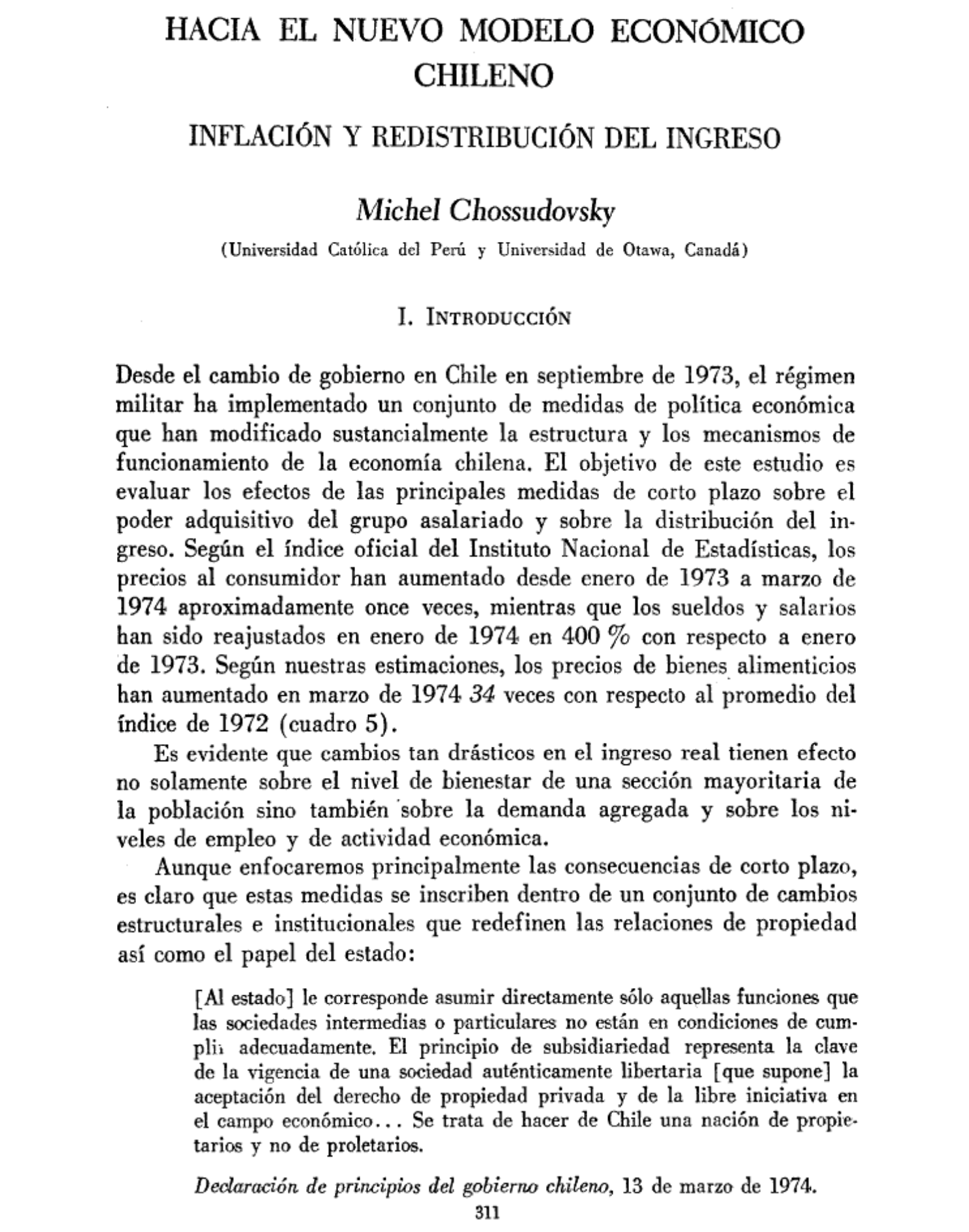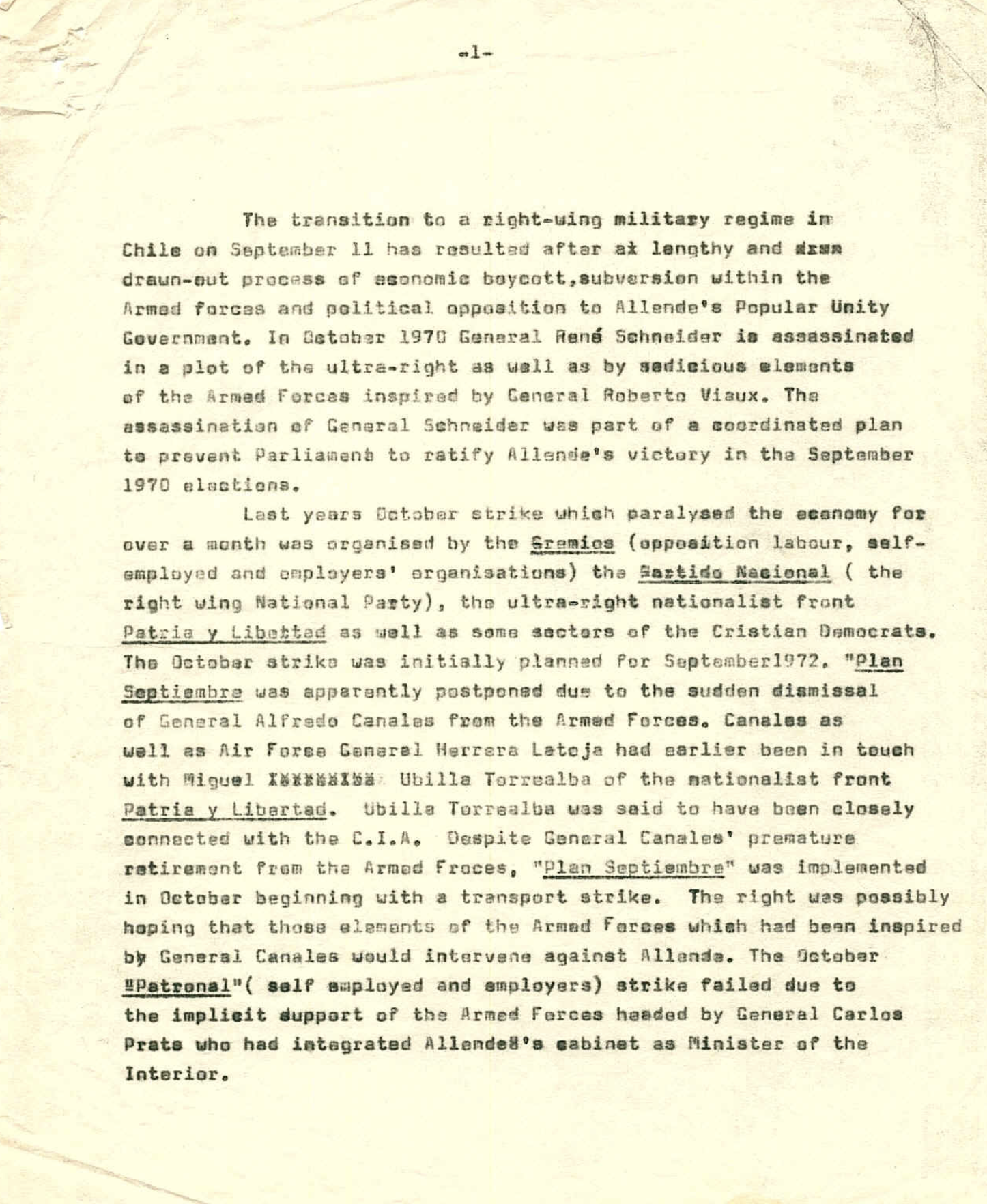51 Years Ago: Chile, September 11, 1973: The Ingredients of a Military Coup
The main objective of the military coup was to impose the neoliberal economic agenda, which was conducive to mass poverty
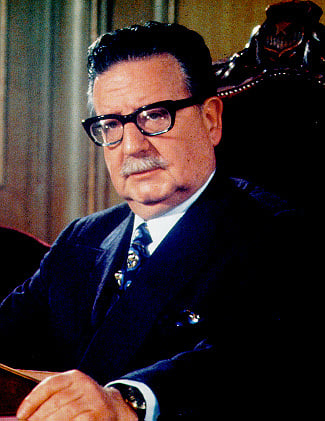
We are commemorating September 11, 2001 as well as September 11, 1973 (Fifty-three years ago)
***
Half a century ago on September 11, 1973, the Chilean military led by General Augusto Pinochet, crushed the democratically elected Unidad Popular government of Salvador Allende.
The objective was to replace a progressive, democratically elected government by a brutal military dictatorship.
The military coup was supported by the CIA. Secretary of State Henry Kissinger played a direct role in the military plot.1
In the weeks leading up to the coup, US Ambassador Nathaniel Davis and members of the CIA held meetings with Chile’s top military brass together with the leaders of the National Party and the ultra-right nationalist front Patria y Libertad. While the undercover role of the Nixon administration is amply documented, what is rarely mentioned in media reports is the fact that the military coup was also supported by a sector of the Christian Democratic Party.
Patricio Aylwin, who was elected Chile’s president in 1989-90, became head of the DC party in the months leading up to the September 1973 military coup (March through September 1973). Aylwin was largely instrumental in the break down of the “Dialogue” between the Unidad Popular government and the Christian Democrats. His predecessor Renan Fuentealba, who represented the moderate wing of the Christian Democratic Party (PDC), was firmly against military intervention. Fuentealba favored a dialogue with Allende (la salida democratica). He was displaced from the leadership of the Party in May 1973 in favor of Patricio Aylwin.
The DC Party was split down the middle, between those who favored “the salida democratica”, and the dominant Aylwin-Frei faction, which favored “a military solution”. 2
On 23 August, the Chilean Camera de Diputados drafted a motion, to the effect that the Allende government “sought to impose a totalitarian regime”. Patricio Aylwin was a member of the drafting team of this motion. Patricio Aylwin believed that a temporary military dictatorship was “the lesser of two evils.”3
This motion was adopted almost unanimously by the opposition parties, including the PDC, and the Partido Nacional.
The leadership of the Christian Democratic Party including former Chilean president Eduardo Frei, had given a green light to the Military. Unquestionably, US intelligence must have played an undercover role in the change of leadership in the PDC.
And continuity in the “Chilean Model” heralded as an “economic success story” was ensured when, 16 years later, Patricio Aylwin was elected president of Chile in the so-called transition to democracy in 1989.
At the time of the September 11 coup, I was Visiting Professor of Economics at the Catholic University of Chile (Instituto de Economia, Universidad Catolica de Chile). In the hours following the bombing of the Presidential Palace of La Moneda, the new military rulers imposed a 72-hour curfew.
When the university reopened several days later, I started patching together the history of the coup from written notes. I had lived through the tragic events of September 11, 1973 as well as the failed June 29, 1973 coup. Several of my students at the Universidad Catolica had been arrested by the military Junta.
In the days following the military takeover, I started going through piles of documents and newspaper clippings, which I had collected on a daily basis since my arrival in Chile in early 1973. A large part of this material, however, was lost and destroyed by my research assistant, fearing political reprisals in the days following the coup.
This unpublished article (below) was written 51 years ago (see below). It was drafted on an old typewriter in the weeks following September 11, 1973.
This original draft article plus a few carbon copies were circulated among close friends and colleagues at the Catholic University. It was never published. For 30 years it lay in a box of documents at the bottom of a filing cabinet.
I have transcribed the text from the yellowed carbon copy draft [in 2003]. Apart from minor editing, I have made no changes to the original article.
The history of this period has since then been amply documented including the role of the Nixon administration and of Secretary of State Henry Kissinger in the plot to assassinate Allende and install a military regime.
Chicago Economics: Neoliberal Dress Rehearsal of the Structural Adjustment Programme (SAP)
The main objective of the US-supported military coup in Chile was ultimately to impose the neoliberal economic agenda. The latter, in the case of Chile, was not imposed by external creditors under the guidance of the IMF. “Regime change” was enforced through a covert military intelligence operation, which laid the groundwork for the military coup. Sweeping macro-economic reforms (including privatization, price liberalization and the freeze of wages) were implemented in early October 1973.
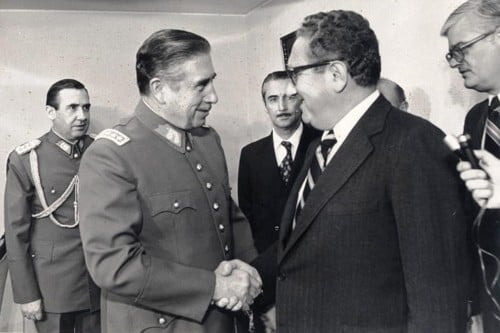 Barely a few weeks after the military takeover, the military Junta headed by General Augusto Pinochet ordered a hike in the price of bread from 11 to 40 escudos, a hefty overnight increase of 264%. This “economic shock treatment” had been designed by a group of economists called the “Chicago Boys.”
Barely a few weeks after the military takeover, the military Junta headed by General Augusto Pinochet ordered a hike in the price of bread from 11 to 40 escudos, a hefty overnight increase of 264%. This “economic shock treatment” had been designed by a group of economists called the “Chicago Boys.”
While food prices had skyrocketed, wages had been frozen to ensure “economic stability and stave off inflationary pressures.”
From one day to the next, an entire country had been precipitated into abysmal poverty; in less than a year the price of bread in Chile increased thirty-six fold (3700%). Eighty-five percent of the Chilean population had been driven below the poverty line.
I completed my work on the “unpublished paper’ entitled “The Ingredients of a Military Coup” (scroll down) in late September 1973.
In October and November 1973, following the dramatic hikes in the price of food, I drafted in Spanish an initial “technical” assessment of the Junta’s deadly macro-economic reforms, largely focussing on an engineered process of impoverishment.
“La Medición del Ingreso Minimo de Subsistencia y la Politica de Ingreso para 1974′ .
click link to download the report (pdf)
Fearing censorship, I limited my analysis to the collapse of living standards in the wake of the Junta’s reforms, resulting from the price hikes of food and fuel, without making any kind of political analysis.
The Economics Institute of the Catholic University was initially reluctant to publish the report. They sent it to the Military Junta for its approval prior to its release.
I left Chile for Peru in December 1973. The report was released as a working paper (200 copies) by the Catholic University of Chile a few days after my departure.
In Peru, where I joined the Economics Department of the Catholic University of Peru, I was able to write up a more detailed study of the Junta’s neoliberal reforms and its ideological underpinnings. This study was published in 1975 in Spanish. (Trimestre Economico, No. 166) and subsequently in English.
HACIA EL NUEVO MODELO ECONÓMICO CHILENO INFLACIÓN Y REDISTRIBUCIÓN DEL INGRESO on JSTOR
Needless to say, the events of September 11, 1973 also marked me profoundly in my work as an economist.
Through the tampering of prices, wages and interest rates, people’s lives had been destroyed; an entire national economy had been destabilized. Macro-economic reform was neither “neutral” –as claimed by the academic mainstream– nor separate from the broader process of social and political transformation.
I also started to understand the role of military-intelligence operations in support of what is usually described as a process of “economic restructuring”.
In my earlier writings on the Chilean military Junta, I looked upon the so-called “free market” reforms as a well-organized instrument of “economic repression.”
The Argentina March 1976 Coup d’Etat
Two years later, after spending almost a year in Venezuela as advisor to the Minister of Planning (CORDIPLAN) (Government of Carlos Andres Perez), I was invited to Argentina as Visiting professor at the National University of Cordoba in the northern industrial heartland of Argentina under the auspices of an ILO project.
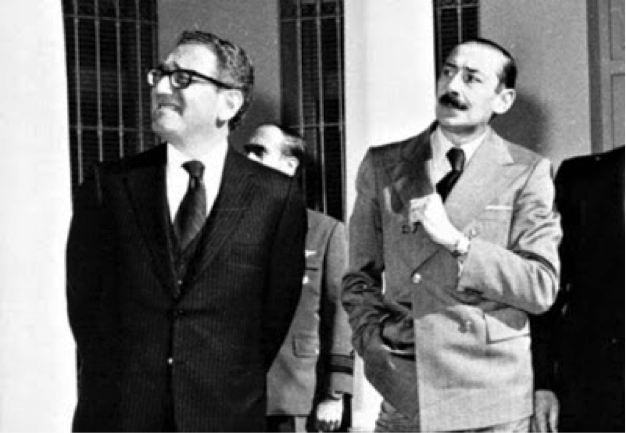 My stay coincided with the March 1976 military coup d’État. It was “The Dirty War”. “La Guerra Sucia”. Tens of thousands of people were arrested; the “Desaparecidos” were assassinated. The military takeover in Argentina was in some regards “a carbon copy” of the CIA-led coup in Chile.
My stay coincided with the March 1976 military coup d’État. It was “The Dirty War”. “La Guerra Sucia”. Tens of thousands of people were arrested; the “Desaparecidos” were assassinated. The military takeover in Argentina was in some regards “a carbon copy” of the CIA-led coup in Chile.
Henry Kissinger and General Jorge Videla
And behind the massacres and human rights violations, “free market” reforms had also been prescribed, this time under the supervision of Argentina’s New York creditors.
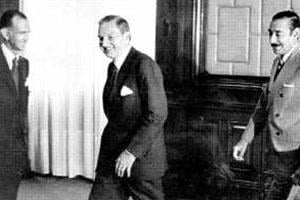 The IMF’s deadly economic prescriptions under the “structural adjustment program” had not yet been officially launched. The experience of Chile and Argentina under the “Chicago boys” was “a dress rehearsal” of things to come.
The IMF’s deadly economic prescriptions under the “structural adjustment program” had not yet been officially launched. The experience of Chile and Argentina under the “Chicago boys” was “a dress rehearsal” of things to come.
David Rockefeller (Centre) meets up with General Jorge Videla and Finance Minister Martinez de Hoz
In due course, the economic bullets of the “free market system” were hitting country after country.
Since the onslaught of the debt crisis of the 1980s, the same IMF “economic medicine” has routinely been applied in more than 150 developing countries.
From my earlier work in Chile, Argentina and Peru, I started to investigate the global impacts of these “shock treatment reforms“. Relentlessly feeding on poverty and economic dislocation, a New World Order was taking shape.
(For further details, see Michel Chossudovsky,The Globalisation of Poverty and the New World Order, Second Edition, Global Research, 2003)
This forward with minor edits was initially published in 2003 to commemorate the 30th anniversary of the September 1 1973 military coup.
***
Today my thoughts are with the people of Chile, who are still under the brunt of neoliberal oppression.
***
Michel Chossudovsky, September 11, 2003 [minor revisions September 10, 2013, September 11, 2021, September 11, 2024
Notes
1 For details see http://globalresearch.ca/articles/KOR309A.html and references below
2. See Interview with Renan Fuentealba at http://www.finisterrae.cl/cidoc/citahistoria/emol/emol_22092002.htm
See also: El acuerdo que anticipó el golpe, http://www.quepasa.cl/revista/2003/08/22/t-22.08.QP.NAC.ACUERDO.html .
The Ingredients of a Military Coup
by Michel Chossudovsky
[Catholic University of Chile, Santiago de Chile, September 1973, Unpublished draft]
First published by Global Research, September 11, 2003
Original September 1973 draft: click to enlarge
The transition to a right-wing military regime in Chile on September 11 [1973] has resulted after a lengthy and drawn-out process of economic boycott, subversion within the Armed Forces and political opposition to Allende’s Popular unity government.
In October 1970, General René Schneider was assassinated in a plot of the ultra-right together with seditious elements of the Armed Forces led by General Roberto Viaux. The assassination of General Schneider was part of a coordinated plan to prevent Parliament from ratifying Allende’s victory in the September 1970 presidential elections.
Last year’s [1972] October strike which paralyzed the economy for over a month, was organized by the gremios (employers’ organizations together with opposition labor and self employed organizations), the Partido Nacional and the ultra-right nationalist front Patria y Libertad. Some sectors of the Christian Democratic Party were also involved.
The October Strike had initially been planned for September 1972. “Plan Septiembre” was apparently postponed due to the sudden dismissal of General Alfredo Canales from the Armed Forces.
Canales together with Air Force General Herrera Latoja had earlier been in touch with Miguel Ubilla Torrealba of the nationalist front Patria y Libertad.
Ubilla Torrealba was said to have been closely connected to the CIA.
Despite General Canales premature retirement from the Armed Forces, Plan Septiembre was implemented in October [1972] beginning with a transport strike. The Right was hoping that those elements of the Armed forces, which had been inspired by General Canales would intervene against Allende. The October “Patronal” strike (employers and self-employed) failed due to the support of the Armed Forces headed by General Carlos Prats, who had integrated Allende’s cabinet as Minister of the Interior.
Unpublished draft, September 1973
The June Failed Coup
On June 29, 1973, Coronal Roberto Souper led his tank division in an isolated attack on La Moneda, the Presidential Palace, in the hope that other units of the armed forces would join in. The June coup had initially been planned for the morning of September 27 by Patria y Libertad as well as by several high ranking military officers.
The plans were found out by Military Intelligence and the coup was called off at 6pm on the 26th. A warrant for the arrest of Coronal Souper had been issued.
Confronted with knowledge of his impending arrest, Colonel Souper in consultation with the officers under his command, decided to act in a most improvised fashion. At 9 am, amidst morning rush hour traffic, Tank Division Number Two drove down Bernardo O’Higgins, Santiago’s main down-town avenue towards the Presidential Palace.
While the aborted June Coup had the appearance of an insolated and uncoordinated initiative, there was evidence of considerable support in various sectors of the Navy as well as from Air Force General Gustovo Leigh, now [September 1973] member of the military junta [on 11 September General Leigh integrated the military Junta headed by General Pinochet]. According to well-informed sources, several high ranking officers in the aero-naval base of Quintero near Valparaiso had proposed the bombing of State enterprises controlled by militant left wing groups, as well as the setting up of an air corridor to transport navy troops. The latter were slated to join up with the forces of Colonel Souper in Santiago.
The June trial coup was «useful» indicating to the seditious elements within the Chilean Armed Forces that an isolated and uncoordinated effort would fail. After June 29, the right-wing elements in the Navy and the Air Force were involved in a process of consolidation aimed at gaining political support among officers and sub-officers. The Army, however, was still under the control of Commander in Chief General Carols Prats, who had previously integrated Allende’s cabinet and who was a firm supporter of constitutional government.
Meanwhile in the political arena, the Christian Democrats were pressuring Allende to bring in members of the Military into the Cabinet as well as significantly revising the programme and platform of the Unidad Popular.
Party leaders of the government coalition considered this alternative [proposed by the Christian democrats] as a « legalized military coup» (golpe legal) and advised Allende to turn it down.
Carlos Altamirano, leader of the Socialist Party had demanded that an endorsement of the programme of the Popular Unity coalition by the military be a sina qua non condition for their entry into the Cabinet. Upon the impossibility of bringing in the Military into the Cabinet on acceptable terms, Allende envisaged the formation of a so-called “Cabinet of Consolidation” composed of well known personalities. Fernando Castillo, rector of the Catholic University and a member of the Christian Democratic Party, Felipe Herrera, President of the Inter-|American Development Bank and other prominent personalities were approached but declined.
“The Dialogue”
Pressured by economic deadlock and the transport strike, inflation of more than 15 percent per month and mounting political opposition, Allende sought in the course of July [1973] to resume the political dialogue with the Christian Democratic Party. After the March [1973] parliamentary elections, Patricio Aylwin had replaced Renan Fuentealba [May 1973] as leader of the Christian Democratic Party (PDC). Fuentealba, who represented the progressive wing of the Christian Democratic (PDC), was known to be in favor of a rapprochement with Allende.
In other words, this rightward shift and hardening of the Christian Democrats in relation to the Unidad Popular, contributed to reinforcing their tacit alliance with the ring wing National Party. This alliance was initially intended as an electoral pact in the March [1973] parliamentary elections in which the Unidad Popular obtained 43 percent of the popular vote.
The Dialogue between Allende and Alwyin was a failure. Aylwin stated :
“I have no trust in the democratic loyalty of the Marxist parties because they do not believe in Democracy. They have an inherent totalitarian conception. We are convinced that the democratic path will not solve the underlying economic problems…”
The Communist Party Senator and prominent intellectual Volodia Teitelbaum response was:
“The Christian Democrats are not that innocent. Basically they are in favor of a coup d’Etat because it constitutes a means to conveniently obtaining political power. The Christian Democrats have moved to the Right. They are not interested a Dialogue which implies a consolidation of revolutionary changes”
While the Right was becoming more cohesive, a political split of the Left was imminent. The Communist Part sided with Allende’s constitutional strategy while a section of the Socialist Party (Allende’s own Party) led by Carlos Altamirano and the MAPU (Movimiento de Accion Popular Unitaria -initially a group of Christian Democrats which joined the Unidad Popular in 1969) led by Oscar Garreton, signified their distrust in “bourgeois legality” and the constitutional process and moved increasingly closer to the leftist revolutionary front Movimiento de Izquierda Revolucionaria (MIR). MIR maintained ideological and strategic relations with Cuban revolutionary groups as well as with the Bolivian and Uruguayan Tupamaros. While endorsing many features of the programme of the Unidad Popular, the MIR rejected Allende’s “Chilean Road to Socialism” :
“We must create popular power (poder popular) based on the industrial belts (cordones industriales)” .
The cordones industriales were organized and politicized labor groups. Together with MAPU, MIR was in the process of developing the Grupos de Accion Urbana (Urban Action Groups), with the task of educating and preparing the masses for armed resistance in the case of a military coup.
Purges in the Armed Forces
In August [1973], the Armed forces initiated a series of violent search and arrests directed against the MIR and state enterprises integrated by the industrial belts (cordones industriales). These searches were conducted in accordance with the Fire Arms control Act, adopted by [the Chilean] Congress after the October [1992 employers] strike and which empowered the Armed Forces [bypassing the civilian police authorities] to implement (by Military Law) the control of fire arms. [The objective of this measure was to confiscate automatic weapons of the members of the industrial belts and curb armed resistance by civilians to a military coup].
Meanwhile, right-wing elements in the Navy and Air Force were involved in actively eliminating Allende supporters by a well organized operation of anti-government propaganda, purges and torture. On August 7 [1973], the Navy announced that a “subversive left wing group” integrated by MIR had been found out. Meanwhile, according to reliable sources, a seditious plan of the Right with the intent to bring down Allende’s government, using the Navy to control the entry of supplies into the country, had been discovered. Sailors and officers [within the Navy], who knew about these plans, were tortured and beaten.
The Role of the Political Right
[In August 1973], high ranking military officers and members of Patria y Libertad, met with Senator Bulnes Sanfuentes of the National Party. Admiral Merino now [September 1973] a member of the Junta participated in meetings with members of National Party, senators of the Christian Democratic Party and staff of the US embassy. In fact towards mid-August [1973], a motion declaring US ambassador Nathaniel Davis as persona non grata was drafted by a parliamentary committee of the Unidad Popular. Furthermore, the Armed Forces were colluding with the Ultra-Right by setting up a so-called Base operacional de Fuerzas especiales (BOFE) (Operational Base of Special Forces). BOFE units were integrated by member of the nationalist front Patria y Libertad.
BOFE units were paramilitary divisions receiving material and financial support from the Armed forces. They were intended to undertake subversive and terrorist activities, which the Armed Forces could not openly undertake. BOFE was responsible for the many bomb attacks on pipelines, bridges and electric installations in the months preceding the military coup of September 11 [1973].
General Prats’ Resignation from the Armed Forces
On August 9, Allende reorganized his cabinet and brought in the three joint chiefs of staff, Carlos Prats (Army), Cesar Ruis Danyau (Air force) and Raul Montero (Navy) into a so-called “National Security Cabinet”. Allende was only intent upon resolving the Transport Strike, which was paralyzing the country’s economy, he was anxious to gain whatever support was left within the Armed Forces.
The situation was not ripe for a military coup as long as General Carlos Prats was member of the cabinet, commander in Chief of the Army and Chairman of the Council of Generals.
Towards mid-August, the armed forces pressured Allende and demanded Prats’ resignation and retirement ” due to basic disagreements between Prats and the Council of Generals”. Allende made a final attempt to retain Prats and invited General Prats, Pinochet (now [September 1973] head of the Military Junta), Bonilla now Minister of the Interior), and others for dinner at his private residence. Prats resigned officially on August 23, both from the Cabinet and from the Armed Forces:
“I did not want to be a factor which would threaten institutional discipline… or serve as a pretext to those who want to overthrow the constitutional government”
The Generals’ Secret Meeting
With General Carlos Prats out of the way, the road was clear for a consolidated action by the Army, Navy and Air Force. Prats successor General Augusto Pinochet convened the Council of 24 generals in a secret meeting on August 28. The purpose and discussion of this meeting were not made public. In all likelihood, it was instrumental in the planning of the September 11 military coup.
The reshuffle of Allende’s National Security Cabinet took place on the same day (28 August). It resulted after drawn out discussions with party leaders of the Unidad Popular coalition, and in particular with Socialist Party leader Carlos Altamirano.
The following day, August 29, Altamirano in a major policy speech made the following statement:
“We hope that our Armed Forces have not abandoned their historical tradition, the Schneider Doctrine … and that they could follow a course leading to the installation of a reactionary Brazilian style [military] dictatorship … We are convinced that our armed forces are not prepared to be instrumental in the restoration of the privileges of the financial and industrial elites and landed aristocracy. We are convinced that if the Right wing golpe (coup) were to succeed, Chile would become a new Vietnam.”
On the weekend preceding the military coup, leaders of the National Party and Christian Democratic Party made major political statements, declaring Allende’s government illegal and unconstitutional. Sergio Onofre Jarpa of the National Party declared:
“After the Marxist downfall, the rebirth of Chile! … We will continue our struggle until we see out of office those who failed to fulfill their obligations. From this struggle, a new solidarity and a new institutional framework (institucionalidad) will emerge.”
A few days later, the Presidential Palace was bombed and Allende was assassinated. The rebirth of Chile, and a new institutional framework had emerged.
Michel Chossudovsky
Universidad Católica de Chile,
Santiago de Chile, September 1973 [written in the days following the coup]
Selected References on the Role of Henry Kissinger in the 1973 military coup
Articles
Christopher Hitchens, The Case against Henry Kissinger, Harpers Magazine, February 2001, http://www.findarticles.com/cf_0/m1111/1809_302/69839383/p1/article.jhtml?term=kissinger
Henry Kissinger, US Involved in 1970 Chilean Plot, AP, 9 Sept 2001, http://www.globalpolicy.org/intljustice/general/2001/0909cbskiss.htm
Kissinger May Face Extradition to Chile, Guardian, June 12, 2002, http://www.globalpolicy.org/intljustice/wanted/2002/0614kiss.htm
Marcus Gee, Is Henry Kissinger a War Criminal? Globe and Mail, 11 June 2002, http://www.commondreams.org/views02/0611-03.htm
Jonathan Franklin, Kissinger may face extradition to Chile, Guardian, 12 June 2002, http://www.guardian.co.uk/pinochet/Story/0,11993,735920,00.html
Kissinger’s Back…As 9/11 Truth-Seeker, The Nation, 2003, http://www.thenation.com/capitalgames/index.mhtml?bid=3&pid=176
Chile and the United States: Declassified Documents Relating to the Military Coup, September 11, 1973, http://www.gwu.edu/~nsarchiv/NSAEBB/NSAEBB8/nsaebb8i.htm
30th anniversary of Chile coup; Calls for justice, scrutiny of United States role, Santiago. 11 Sep 2003, http://www.newsahead.com/NewWNF/ChileCoup.htm
USA Regrets Role in Chile’s September 11 Tragedy: US Secretary of State, Colin Powell, admitted Washington’s participation in Chile coup of 1973, Pravda, 17 March 2003, http://english.pravda.ru/world/20/91/368/9766_chile.html [this statement was made barely a week after the military occupation of Iraq by US and British troops.]
Larry Rohter, NYT, 13 Feb 2000, http://www.spartacus.schoolnet.co.uk/COLDallende.htm
Websites
ICAI, Kissinger Watch, http://www.icai-online.org/45365,45370.html
The Kissinger Page, Third World Traveler, http://www.thirdworldtraveler.com/Kissinger/HKissinger.html
Wanted for War Crimes, http://www.zpub.com/un/wanted-hkiss.html
Remember Chile.org, http://www.remember-chile.org.uk/
War Crimes Bio of Augusto Pinochet http://www.moreorless.au.com/killers/pinochet.htm
Chile Information Project — “Santiago Times” http://ssdc.ucsd.edu/news/chip/h98/chip.19981116.html
Salvador Allende and Patricio Aylwin
Carta de Salvador Allende al presidente del Partido Demócrata Cristiano, señor Patricio Aylwin, publicada el día 23 de agosto de 1973
en el diario La Nación de Santiago. http://www.salvador-allende.cl/Textos/Documentos/cartaAylwin.pdf
Andrés Zaldívar, presidente del Senado: “Allende no divide a la Concertación”, Mercurio, 13 August 2003 http://www.mercuriovalpo.cl/site/apg/reportajes/pags/20030831030907.html
Salvador Allende Archive http://www.salvador-allende.cl/
Michel Chossudovsky’s Writings on the Chilean Military Junta’s Economic Reforms
Capital Accumulation in Chile and Latin America”, Yale University Lecture Series on Post-Allende Chile, North South, Canadian Journal of Latin American Studies, vol. IV, vol. XIII, no. 23, 1978, also published in Economic and Political Weekly.
“Acumulación de Capital en Chile”, Comercio Exterior, vol. 28, no. 2, 1978 (Spanish version of above article)
“Chicago Economics, Chilean Style”, Monthly Review, vol. 26, no. 11, 1975, in Spanish in a book published in Lima, Peru,
“Hacia el Nuevo Modelo Economico Chileno, Inflación y Redistribución del Ingreso, 1973-1974”, Cuadernos de CISEPA, no. 19, Catholic University of Peru, 1974, Trimestre Economico, no. 166, 1975, 311-347.
“The Neo-Liberal Model and the Mechanisms of Economic Repression: The Chilean Case”, Co-existence, vol. 12, no. 1, 1975, 34-57.
La Medición del Ingreso Minimo de Subsistencia y la Politica de Ingresos para 1974, documento de trabajo no. 19, Institute of Economics, Catholic University of Chile, Santiago, 1973, p. 37. (Initial text on the economic reforms of the Chilean Military Junta published in December 1973)


